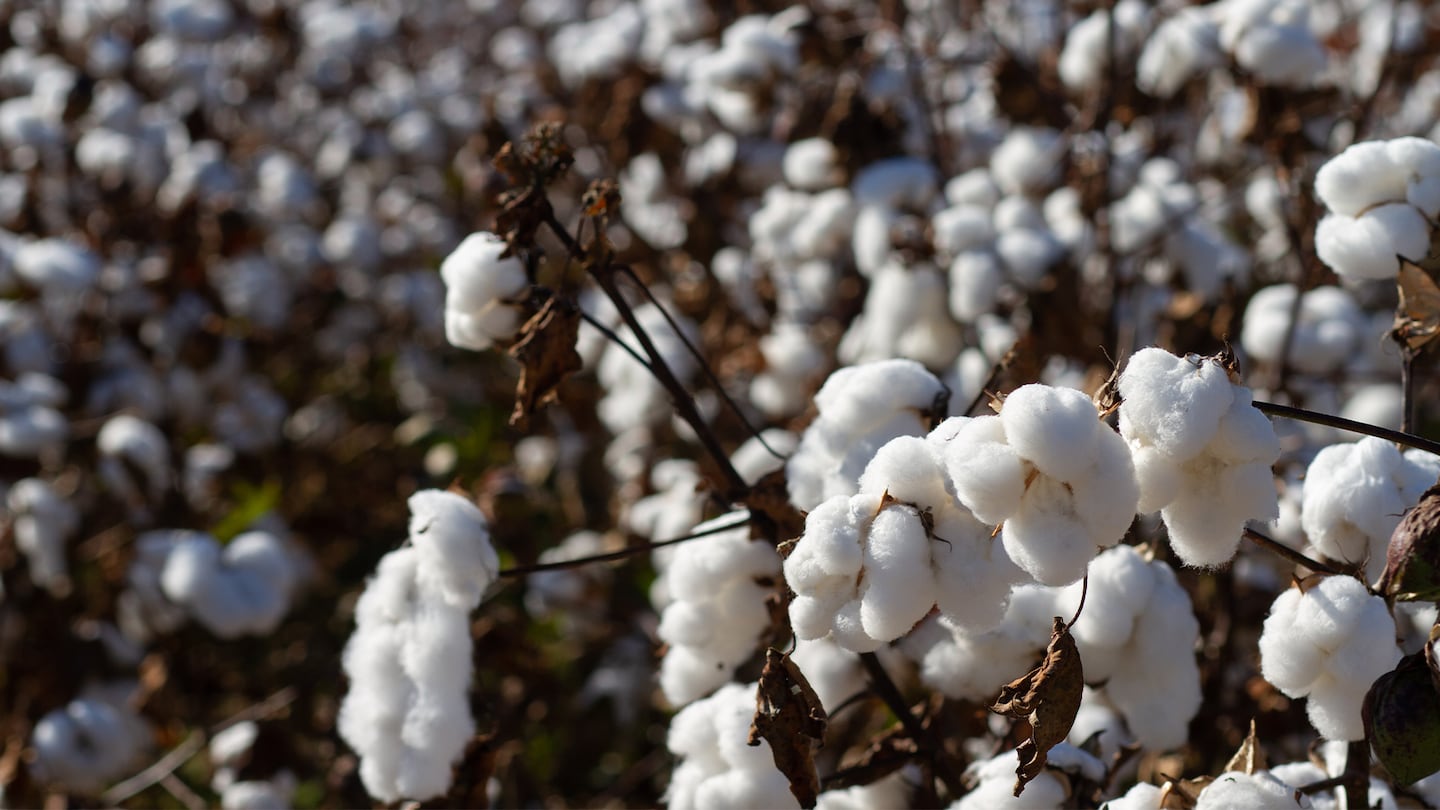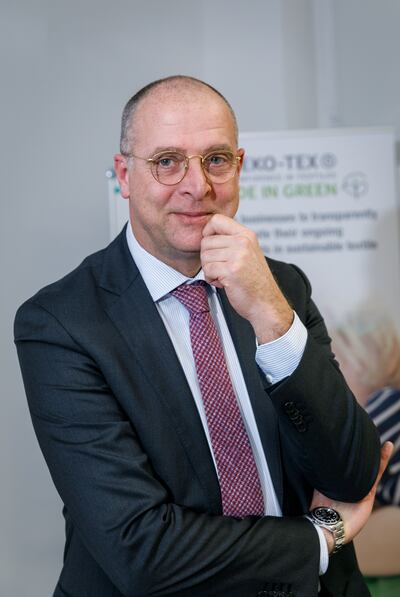
The Business of Fashion
Agenda-setting intelligence, analysis and advice for the global fashion community.

Agenda-setting intelligence, analysis and advice for the global fashion community.

Founded in 1992, Oeko-Tex is a partnership of 17 global, independent leather and textile research institutions and testing laboratories. Its mission is underpinned by formalised, international agreements such as the UN Sustainable Development Goals, to create trust in textiles and leather via rigorous testing for textile composition, production methods and supply chain transparency. Members include UK-based Shirley Technologies, Japan’s Nissenken Quality Evaluation Center, The Swiss institute Testex, Hohenstein Germany and the DTI Danish Technological Institute.
Since its inception, the organisation has offered a ‘Standard 100′ as a label for textiles tested for harmful substances. Testing is based on an extensive criteria catalogue which considers regulated and non-regulated substances and national and international regulations, updated annually.
Today, Oeko-Tex has evolved its offering to signal the brands and retailers doing good, rather than simply causing less harm. In 2022, the association will introduce a ‘responsible business’ certification for brands and retailers who are committed to international human rights agreements and environmental protection, developed in accordance with the UN Guiding Principles on Business and Human Rights and OECD Guidelines on Responsible Business Conduct.
It’s a timely development. As reported in BoF’s State of Fashion 2022 report, fashion is still one of the least environmentally sustainable industries, accounting for 2.1 billion tonnes of CO2 emissions per year — 4 percent of annual global emissions.

Here, BoF sits down with Oeko-Tex general secretary Georg Dieners to understand the association’s industry objectives, consumer and brand benefit, and how its certification strategy is evolving.
Why does Oeko-Tex believe transparency is important within the materials space?
In my view, there are two key aspects that outline why transparency is important. The first is in relation to doing right by the end-consumer, who is harnessing the research power of the internet and social networks to gain deeper insights into the world. They want to make more responsible purchasing decisions that sit in line with their increasingly moral sensibilities.
The second key consideration is regarding industry purchase of textiles and leather goods. In our opinion, it’s equally as important to give buyers the opportunity to make a sustainable decision that corresponds with customer sentiment. They need appropriate transparency when it comes to sourcing decisions via benchmarking and certification systems. In the end, it is a buyer who decides where and under what conditions the products are bought. Often, we’re not very aware of that.
What certifications are providing greater visibility?
For context, Oeko-Tex association was one of the first back in the mid 1990s, to not only attempt to evaluate clothing via product testing, but also to ensure transparency through an assessment of production sites. This was called ‘Standard 1000′ and it initially focused on the environment and safety as the key metrics.
However, it soon became clear to us at Oeko-tex that these two areas of measurement were simply not sufficient to evaluate production impact in depth. Today, we now carry out an evaluation in six modules with “STEP,” which stands for Sustainable Textiles and Leather Production.
Customers want to make more responsible purchasing decisions that sit in line with their increasingly more moral sensibilities.
It’s a modular certification system, designed to implement environmentally friendly production processes in the long term and improve health and safety, while also adding in social aspects — such as chemical management, quality management, and environmental management, all in great detail. The special thing about this is that we do not focus on just one topic. Many certification system are doing that, but we have tried to cover all aspects of daily business in production and ensure all its phases up for assessment.
How important is collaboration in fostering further transparency across the global textile industry?
Ultimately, we believe that collaboration is critical in building a collective understanding. In particular, we need to see cooperation between buyers and sellers and intensive exchange and communication around material origins and production processes. Collaboration is how we will acknowledge not only the need to minimise the danger we cause in the world but better still, avoid it all together. For this, we have to pull together to be able to show changes. We need a [cohesive] platform that can communicate everybody’s efforts.
How does Oeko-Tex engage end-consumers? What education tactics are in place?
It’s not entirely easy to have regular touch points with this group. We are currently utilising social media as it really is a great platform for reaching and educating the customer accordingly. In addition, we organise numerous webinars and circulate them via the Oeko-Tex website.
We have events that are largely online at present, due to the pandemic, where we communicate our message regarding both more sustainable products, and more sustainable consumption. LinkedIn acts as another aspect of our education strategy. We use it to share several stories with partners and influencers to transfer our message out into the world.
As an association, we are seeking to provide tools to not only raise awareness of UN goals but to also go on to achieve them.
We have strong feedback loops from this educational content. I might have several questions to answer every day regarding certifications and consumer buying. There are now so many opportunities to engage with and involve end consumers.
How have the COP26 climate ambitions impacted Oeko-Tex’s objectives?
We see ourselves as being very connected to the global targets. As an association, we are seeking to provide tools to not only raise awareness of UN goals but to also go onto achieve them. We do this by continuously evolving industry improvement metrics.
To ensure [brands and manufacturers] can work towards these goals, we believe it’s necessary to implement processes that start with a kind of inventory, in order to give the company the opportunity to define their own implementation goals. We want to set up systems that mean the main work is conducted by the company itself, so Oeko-Tex can then accompany them on their way to more sustainable action, and to internationally recognised targets — through our checks and balances and evolving certifications.
What are Oeko-Tex’s ambitions for the textile and leather industry over the medium term?
For our organisation, there is a distinct goal. We are working to convince even more companies of the benefit of sustainable action and the advantages that Oeko-Tex certifications can bring to brands. It’s also important for us to inform and educate end consumers and to enable them to make responsible purchasing decisions.
I am convinced that by showing transparent supply chains, this decision can be made possible. The change required really is in the thinking. It’s not an abnormal thing, it’s very normal to want to save resources. In this instance, if brands change their approach, transparent production methods and, subsequently, more sustainable clothes, will become a future norm.
This is a sponsored feature paid for by Oeko-Tex as part of a BoF partnership.
The fashion industry continues to advance voluntary and unlikely solutions to its plastic problem. Only higher prices will flip the script, writes Kenneth P. Pucker.
The outerwear company is set to start selling wetsuits made in part by harvesting materials from old ones.
Companies like Hermès, Kering and LVMH say they have spent millions to ensure they are sourcing crocodile and snakeskin leathers responsibly. But critics say incidents like the recent smuggling conviction of designer Nancy Gonzalez show loopholes persist despite tightening controls.
Europe’s Parliament has signed off rules that will make brands more accountable for what happens in their supply chains, ban products made with forced labour and set new environmental standards for the design and disposal of products.